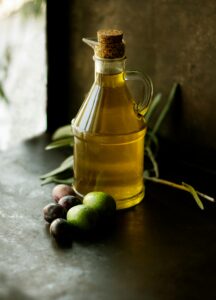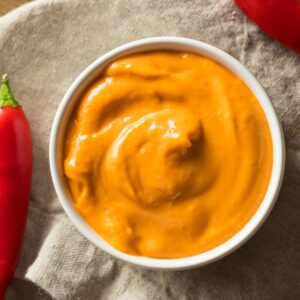Balsamic Glaze vs Vinaigrette
Balsamic vinegar delivers a delicious burst of tang to many dishes, but the way this tang is delivered can make a big difference in the overall flavor. Learn the difference between Balsamic Glaze and Balsamic Vinaigrette so you can choose the perfect one for your dish.
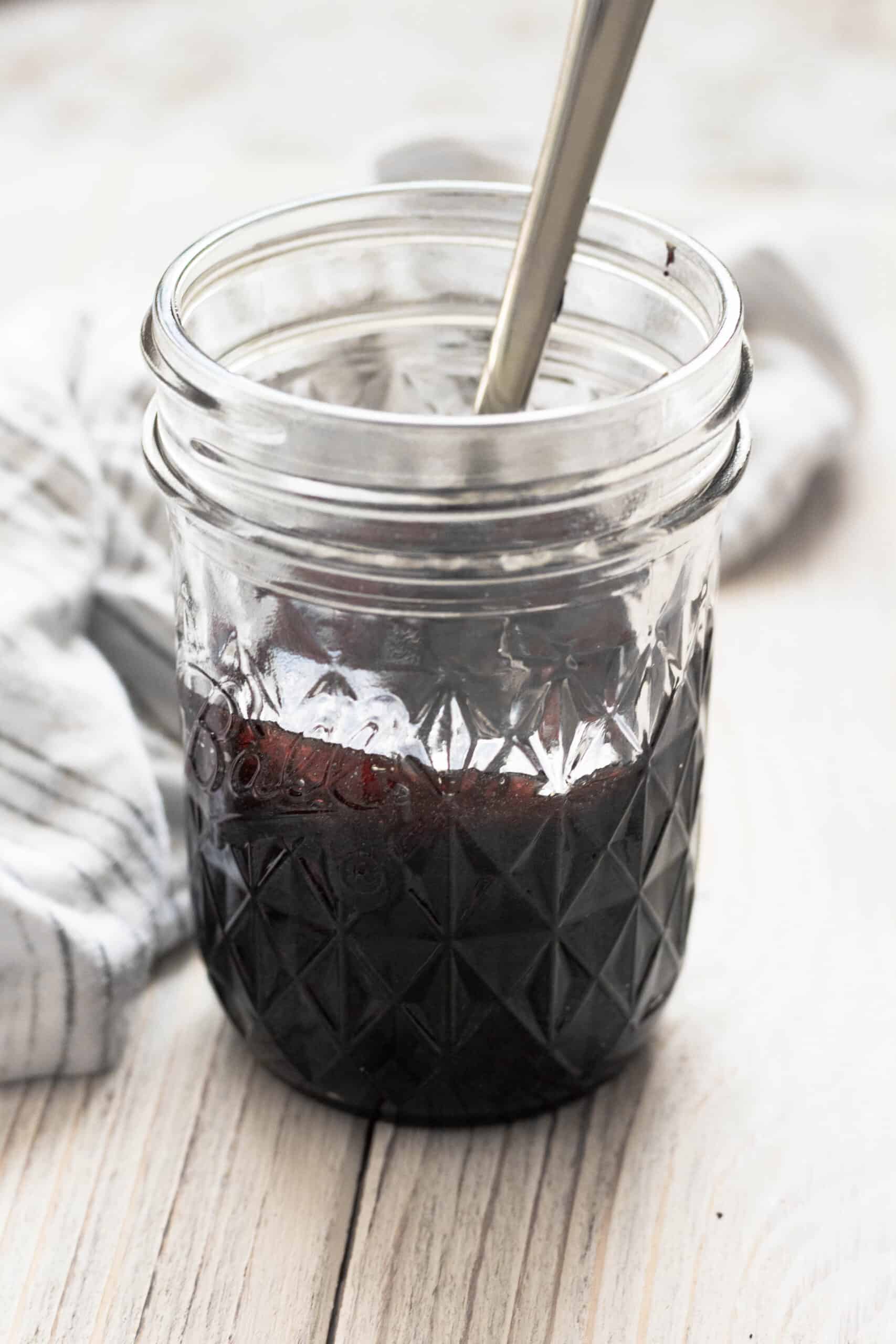
Balsamic vinegar has a distinct, bold flavor that adds a perfect compliment and tang to many recipes–both sweet and savory. However, few recipes call for balsamic vinegar directly. Most call for Balsamic Glaze or Balsamic Vinaigrette.
While both of these pantry staples add a burst of flavor from balsamic vinegar, the impact of each condiment is very different.
If you are looking to take your dish to the next level with a splash of balsamic vinegar, you want to have both Balsamic Glaze and Balsamic Vinaigrette in your back pocket. Before you head to the grocery store to pick up a bottle, let’s talk about what makes each unique.
What is Balsamic Vinegar?

Before we jump into the differences between Balsamic Glaze and Vinaigrette, it’s important to talk about the key ingredient in both: classic balsamic vinegar.
Traditional balsamic vinegar is made from unfermented grape juice, and processed in wooden barrels. The result is a deep, dark vinegar that has a complex and slightly sweet flavor. It is not bitter like red wine vinegar.
The process of making good-quality balsamic vinegar is complex and time-consuming. It may sit in a wooden barrel to process for a long time–several years at least. This may lead to a higher price in the end, but the flavor is unmatched by any other type of vinegar.
What is Balsamic Vinaigrette?
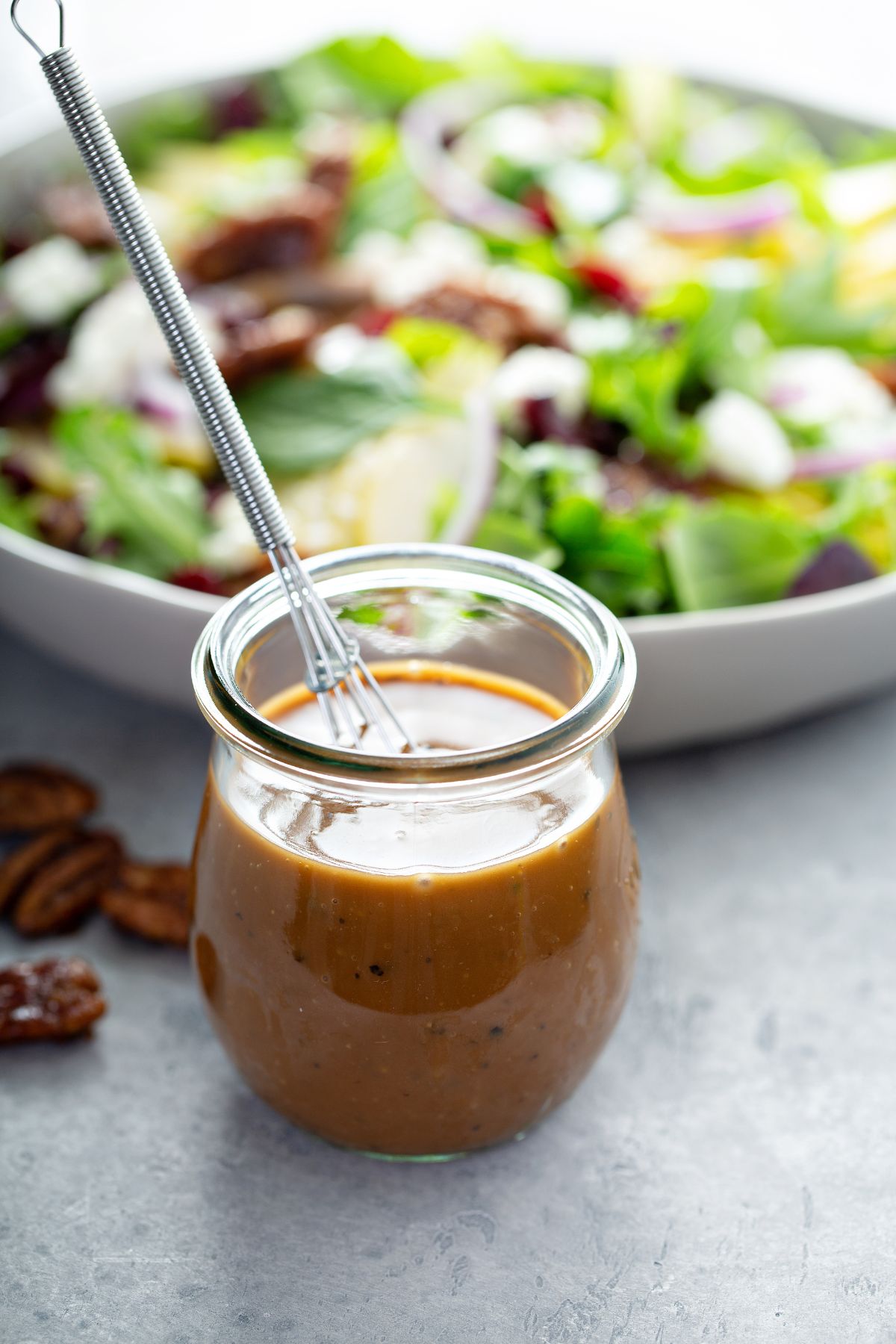
Balsamic Vinaigrette is a classic salad dressing made with balsamic vinegar, olive oil, and other seasonings.
Balsamic Vinaigrette is considered a healthy salad dressing because it contains less sugar than other dressings, especially if you make your own.
What is Balsamic Glaze?
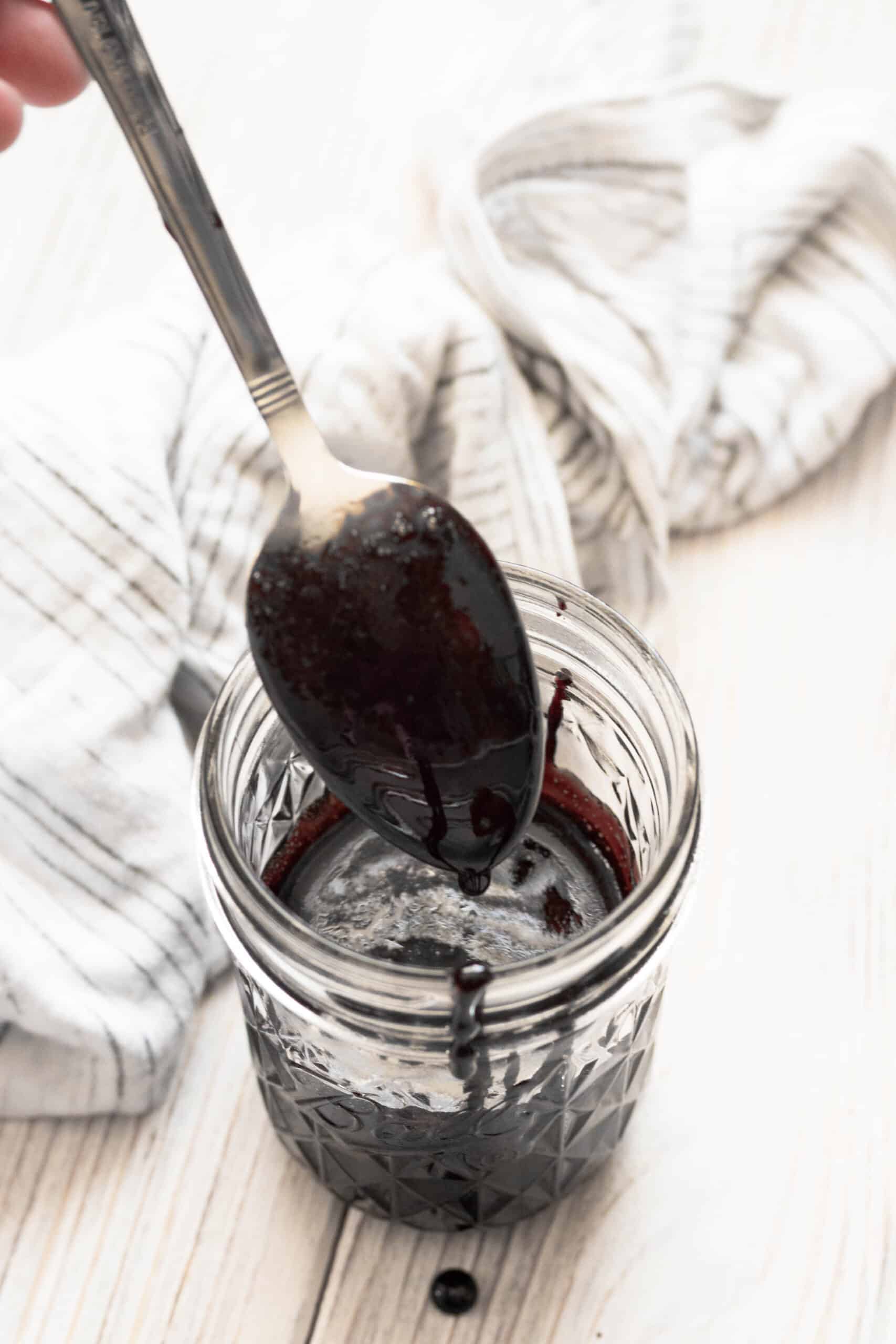
Balsamic Glaze is a syrup made by reducing balsamic vinegar along with a sweetener like a little brown sugar or maple syrup. I recommend making a large batch and storing it in a mason jar in the refrigerator for easy access!
This reduction of balsamic vinegar with added sugar is very versatile and is used as a condiment with a wide variety of dishes. Balsamic Glaze is perfect for drizzling over salad, flatbreads, or even ice cream. It has an intense flavor and thick consistency.
Ingredients
The exact ingredients in your Balsamic Vinaigrette or Balsamic Glaze may vary, depending on whether you are purchasing a bottle from the store or preparing your own.
Typically Balsamic Glaze contains only balsamic vinegar and either brown sugar, a few tablespoons of honey, or maple syrup as a sweetener. It’s somewhat time-consuming but very simple to make your own.
Balsamic Vinaigrette can really vary. At its core, it contains olive oil and balsamic vinegar but some chefs may add some Dijon mustard and other seasonings for more flavor.
Appearance
What you might notice about Balsamic Vinaigrette and Balsamic Glaze right away is how different they look.
Balsamic Vinaigrette is lighter in color, because of the addition of olive oil, and may or may not have a perfectly smooth appearance, depending on what spices have been added. The oil may separate from the vinegar and require a good stir before each use.
Balsamic Vinaigrette has a very thin consistency.
Balsamic Glaze is a much deeper color and looks more like a syrup or a glaze. It has a consistent color throughout and should maintain that color even when drizzled onto a dish.
Balsamic Glaze is thick (but not too thick!) and comes out in a sleek syrupy consistency. It’s thick enough to coat the back of a spoon at room temperature but also melts onto your dishes to give the perfect balance of sweet and flavorful.
Uses

Both Balsamic Glaze and Balsamic Vinaigrette are very versatile condiments that are delicious over a bed of fresh greens. They have the ability to bring out a new level of flavor in a wide variety of dishes.
Balsamic dressing has all the tangy flavor of balsamic vinegar but the added extra virgin olive oil makes it slightly more subtle. It is best for salads and can also be used as a marinade for roasted vegetables or meats. Balsamic Vinaigrette may also add some delicious moisture to a hearty sandwich.
Balsamic Glaze is used more as a finishing. It can be drizzled on top of salads (especially caprese salad), and fresh fruit, or used as a finishing touch for roasted vegetables like Brussels sprouts. Balsamic vinegar glaze blends perfectly with goat cheese, mozzarella cheese, or cream cheese.
Balsamic Glaze is also delicious on desserts. You may be surprised by the intense flavor created when Balsamic Glaze meets peaches, fresh raspberries or vanilla ice cream.
Balsamic Glaze is also delicious on meats, like pork chops or balsamic chicken, but it is usually added once the meat has finished cooking, to add even more flavor.

